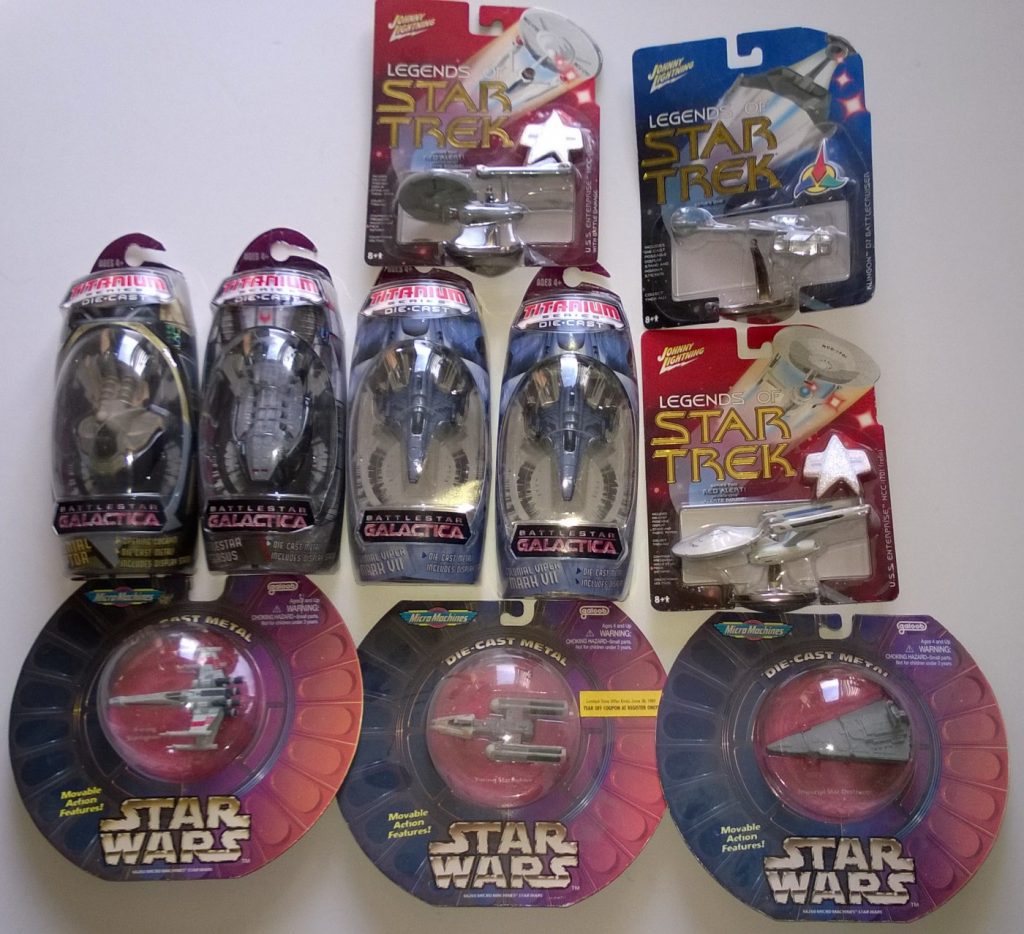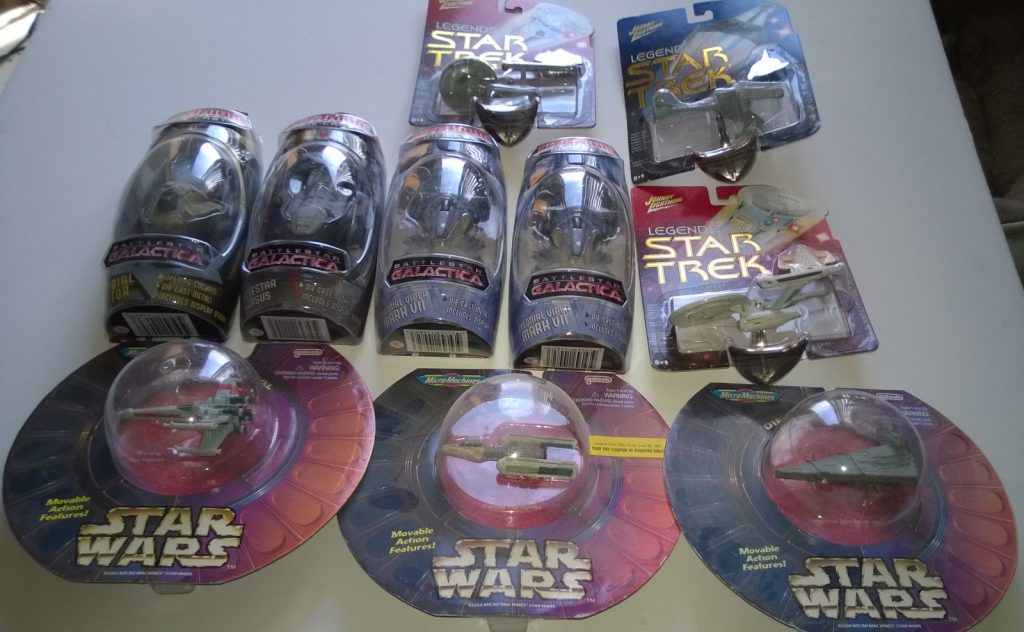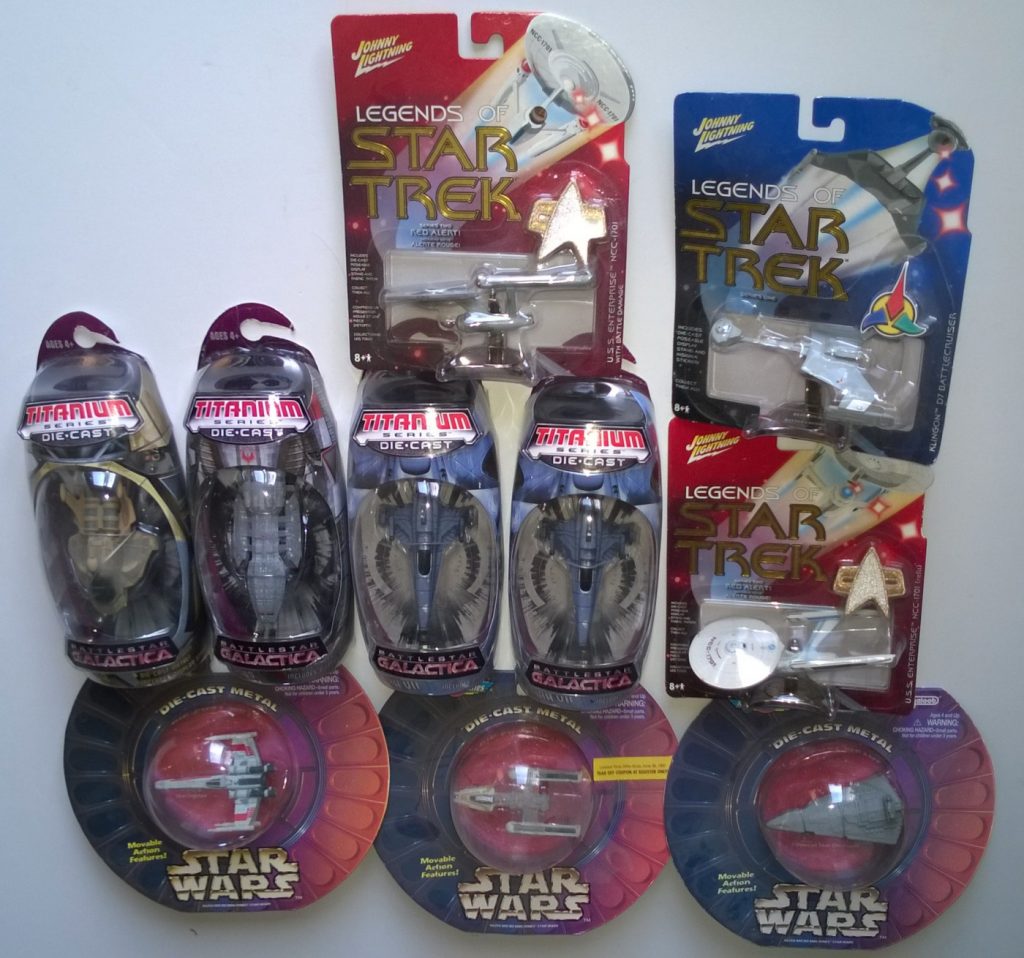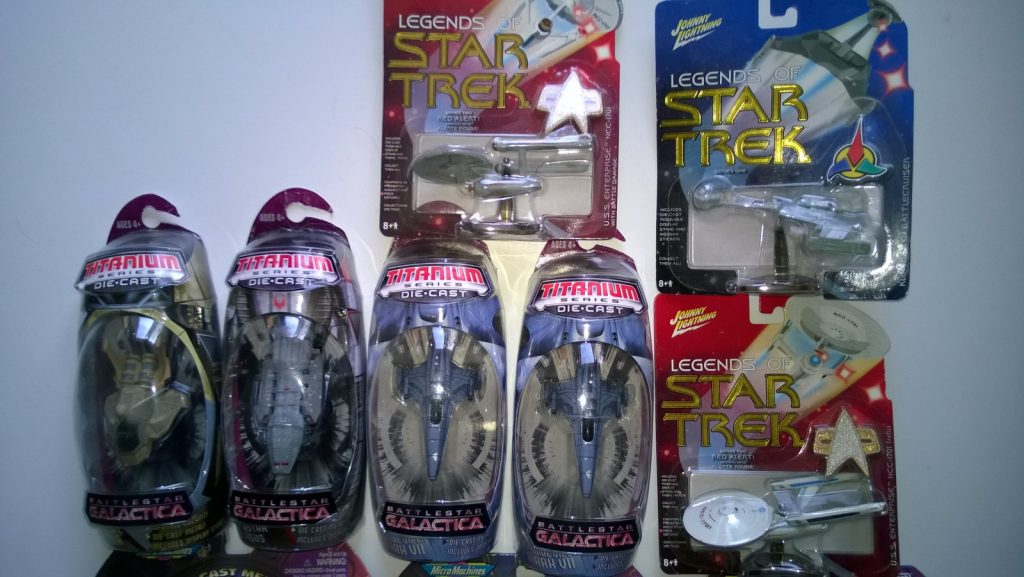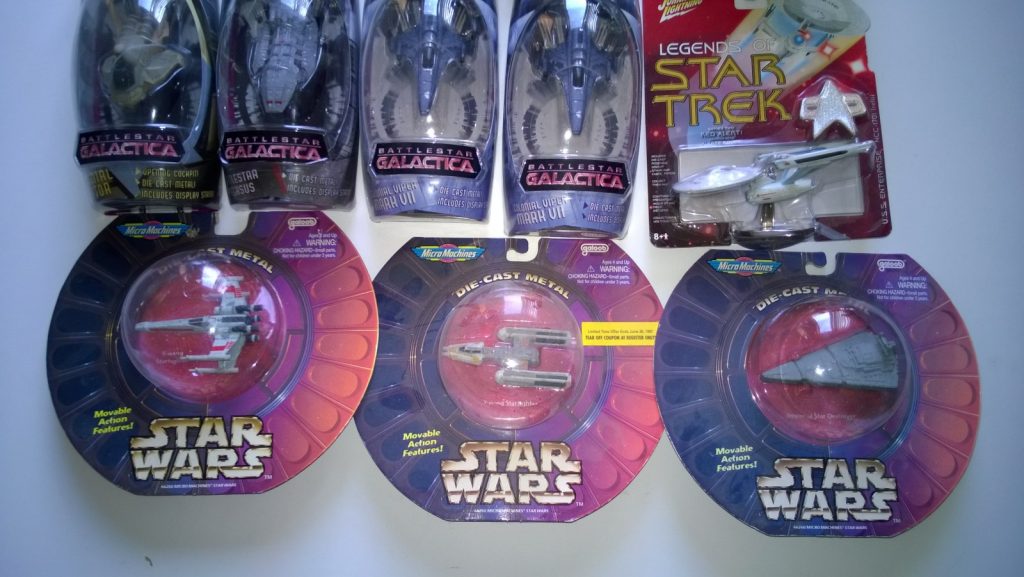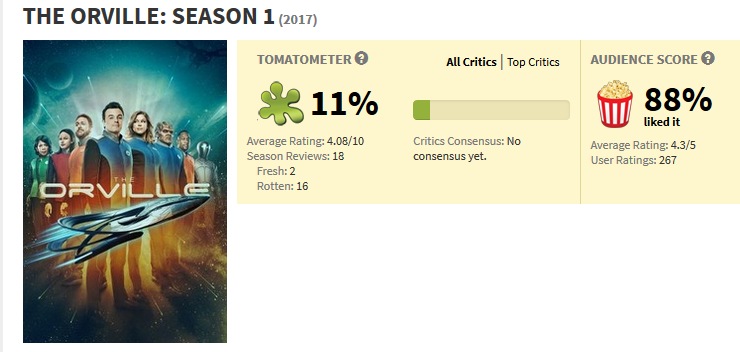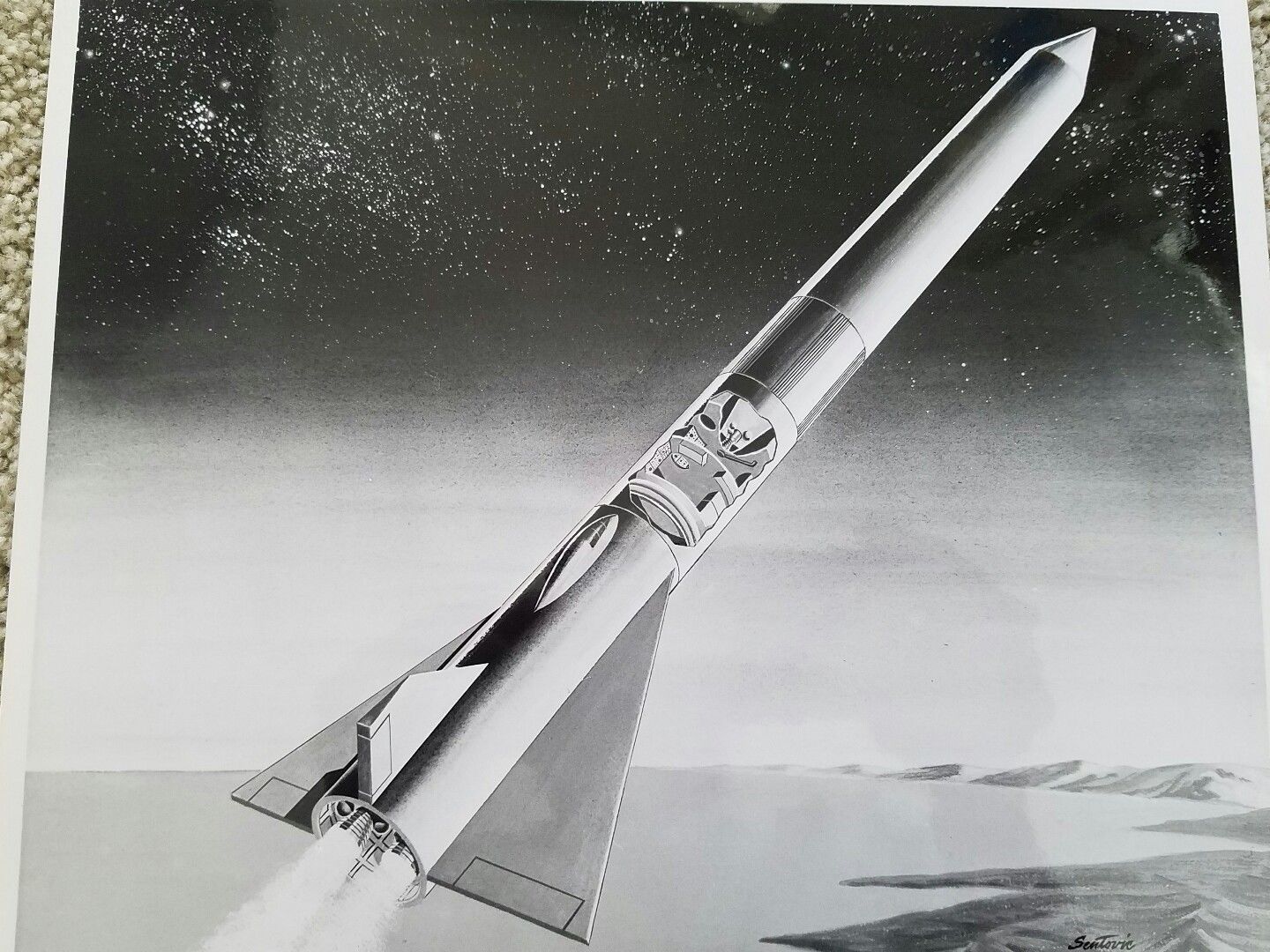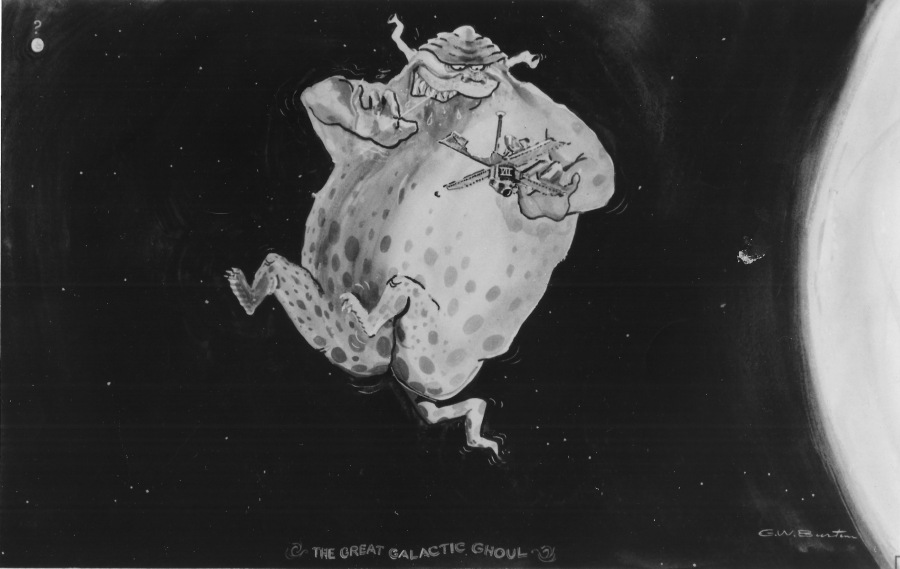A rather different set of stuff than the recent sales of books, but I’m doing these the same way. I’d prefer to sell these as a single lot, so as always I’m doing a discount. The prices are based on what they seem to be going for on eBay. If you want the lot, let me know via email or comment. Individually these total up to $204; as a lot, I’ll go with $175 plus postage (calculated after I know where they’re going).
Galoob Micro Machines Die Cast Y-Wing, still in package: $6
Galoob Micro Machines Die Cast X-Wing, still in package: $6
Galoob Micro Machines Die Cast Star Destroyer, still in package: $7
Galoob Micro Machines Die Cast Trade Federation Battleship, still in package: $8
Johnny Lightning “Legends of Star Trek Klingon D7 Battlecruiser,” still in package: $20
Johnny Lightning “Legends of Star Trek USS Enterprise Refit,” still in package: $20
Johnny Lightning “Legends of Star Trek USS Enterprise w/battle damage,” still in package: $20
Galoob Micro Machines “Titanium Series Die Cast” Battlestar Galactica “Battlestar Pegasus,” still in package: $35
Galoob Micro Machines “Titanium Series Die Cast” Battlestar Galactica “Raptor,” still in package:$30
Galoob Micro Machines “Titanium Series Die Cast” Battlestar Galactica “Colonial viper Mk VII,” still in package:2 at $25 each
